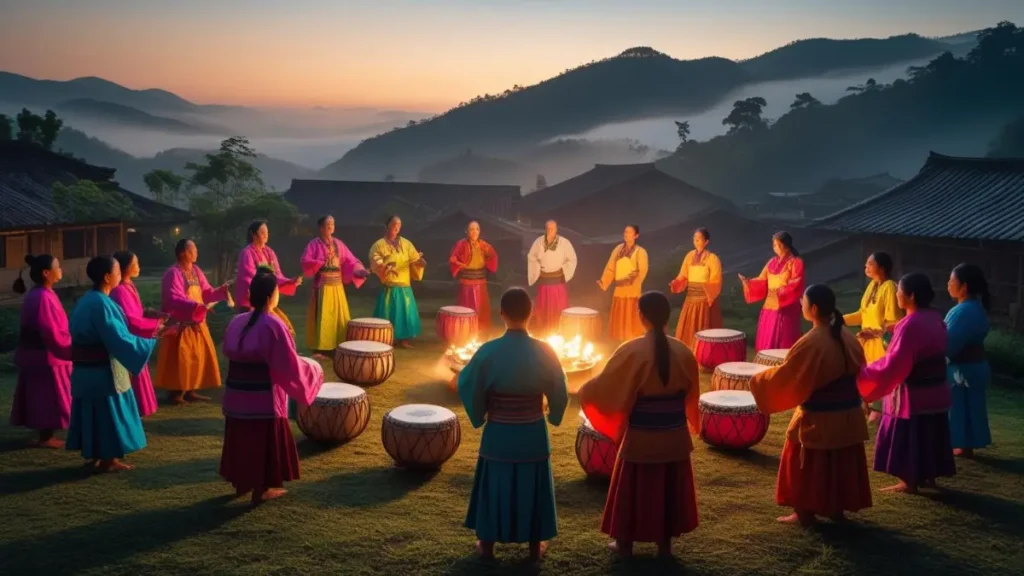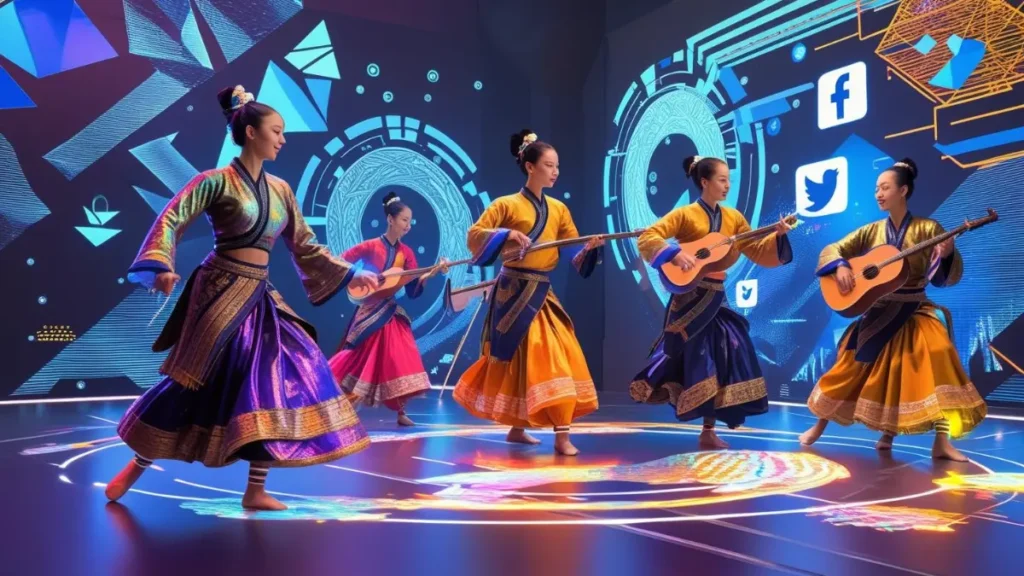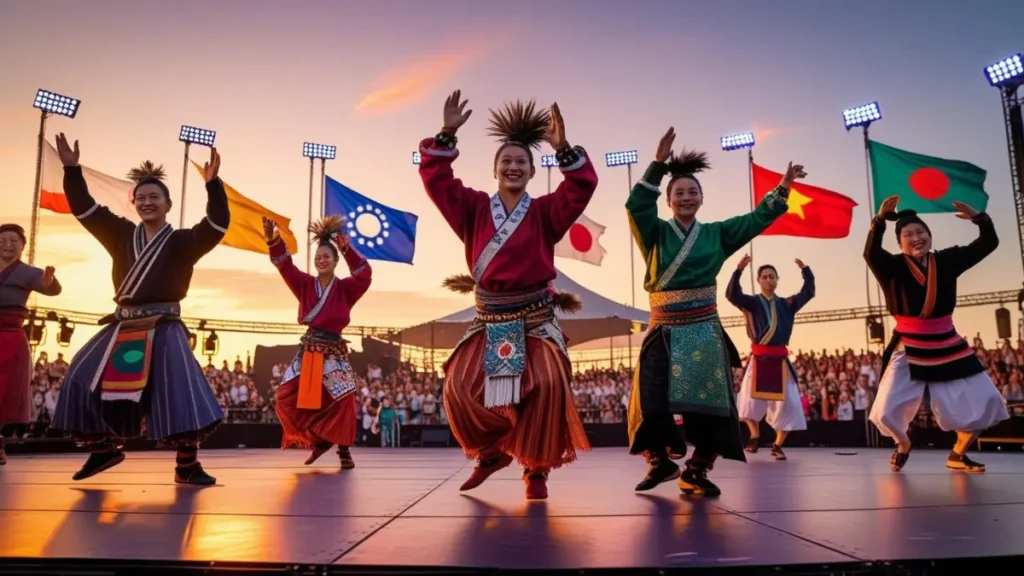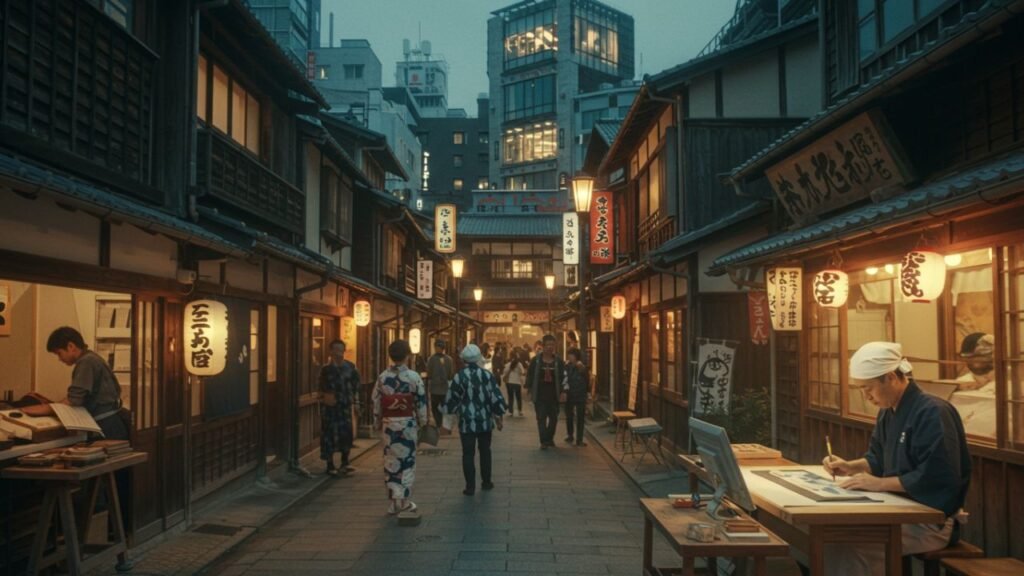The Tsunaihaiya tradition in the digital age reflects how ancient cultural practices can evolve and thrive through modern technology.In a world increasingly shaped by digital innovation and global connectivity, traditions rooted in community and ritual often face the risk of fading into obscurity. Yet, tsunaihaiya—a culturally rich practice blending music, dance, and collective memory—demonstrates how heritage can be both preserved and transformed. Once confined to its regional origins, tsunaihaiya is now experiencing a powerful revival, thanks to digital platforms, social media, and virtual storytelling.
This renewed presence is not merely a replication of the past, but a dynamic reinterpretation that allows younger generations to engage with their ancestral roots while shaping new meanings for the future. As it adapts to the rhythms of modern life, the Tsunaihaiya tradition in the digital age stands as a symbol of how timeless customs can thrive without losing their essence.
What Is Tsunaihaiya? A Cultural Expression Beyond Words

Tsunaihaiya is more than a sound. It is a cultural tradition passed through voices, rituals, and memory. No one can say where it began. It feels ancient, like something whispered by wind or sung by rivers. The name itself holds no meaning in modern language, but its power lies in the feeling it gives.
People use Tsunaihaiya to express unity. In many rural community practices, it creates a rhythm for seasonal festivals and agricultural ceremonies. It is a way to share emotions without using common words. Its mystery is what makes it beautiful.
Today, tsunaihaiya continues to live on in both sacred spaces and creative reinterpretations. Performed by folk ensembles, preserved in oral storytelling, and now shared through digital recordings, it bridges the gap between generations. Whether echoing in a mountain village or streaming through a smartphone, tsunaihaiya remains a voice of belonging, a symbol of continuity, and a reminder that not all meaning must be spoken to be understood.
Unveiling the Mysterious Origins of Tsunaihaiya
The true history of Tsunaihaiya is unknown. Scholars call it an “orphan word”—a term with no clear family. Some think it came from ancient indigenous knowledge systems, passed by voices only. Others link it to forgotten sacred ceremonies.
Through oral history, the tradition survived. Elders in small villages still remember hearing it as children. It was sung during planting seasons or after a successful harvest. Ancestral connection is strong in this chant, even if no one can translate it.
Because there are no written records or standardized forms, tsunaihaiya has remained fluid, adapting subtly from one region or family line to another. This flexibility is part of its power—it is not bound by strict rules but guided by intuition, memory, and emotion. Each performance is a living artifact, echoing voices from the past while allowing new interpretations to emerge.
The Symbolism and Spirit Behind Tsunaihaiya
To many, Tsunaihaiya carries a spiritual significance. Its tones rise and fall like breathing. It represents the balance between earth and sky. Some say it brings peace to the land or calls for rain. Others use it for healing.
Its symbolism is tied to nature and balance. It brings the community together to celebrate shared history and hopes. Its spiritual roots of tradition offer peace in a busy world.
Even without direct meanings, tsunaihaiya functions as a form of ritual language—a way of communicating with the unseen. The chants, often performed in circles or under open skies, serve as bridges between people and the natural world. In moments of grief, joy, or transition, the sound becomes a kind of medicine, not curing the body but soothing the soul.
How Tsunaihaiya Became a Living Tradition
Even in the digital age, Tsunaihaiya has not faded. Instead, it has grown. Young artists now use it in new music and digital art. These efforts keep it alive as a living tradition, not just a memory.
This mix of old and new is key to its power. It shows how tradition in modern society can change without losing its heart. Harmonizing tradition and technology makes it more relatable to the next generation.
🌐 Curious how other traditions are adapting to tech? Check out our Culture & Innovation Blog for more cultural evolutions in the digital age.
Online platforms like video-sharing sites, virtual performances, and even educational apps have made tsunaihaiya accessible beyond its local roots. From rural festivals to digital classrooms, it now echoes in both physical spaces and virtual realms. Its survival depends not just on preservation, but on participation—inviting people to experience, reinterpret, and share it in ways that keep the tradition alive and evolving.
The Role of Tsunaihaiya in Community Rituals and Gatherings
In many villages, Tsunaihaiya is still sung during rituals and gatherings. When people work together or celebrate, they sing. It creates unity. The communal identity gets stronger through shared sounds.
These gatherings are often led by elders. They guide the rhythm, and younger people follow. This builds social cohesion through art, where music is the bridge between hearts.
Beyond its artistic value, tsunaihaiya serves as a cultural framework for teaching values, respect, and collective memory. Through participation in these rituals, young members of the community learn not only the melody but the meaning behind it—carrying forward both the spirit and the responsibility of tradition. In this way, tsunaihaiya is more than performance; it is a ritual of belonging.
Artistic Interpretations: Tsunaihaiya in Music, Dance, and Design
Modern arts have adopted Tsunaihaiya in unique ways. Musicians sample it in lo-fi or trance tracks. Visual artists paint its emotion with abstract forms. Dancers use it to guide body flow.
This modern reinterpretation of rituals helps people feel the tradition in today’s context. Artists are not copying the past; they are growing it. This is how art as cultural transmission survives.
Through music, dance, and visual storytelling, the Tsunaihaiya tradition in the digital age continues to inspire contemporary artists around the world.. Its sounds inspire not only auditory landscapes but also fashion design, film, and interactive media. In each form, the essence of tsunaihaiya—its mystery, rhythm, and spiritual depth—is reshaped to resonate with contemporary audiences.
The Digital Evolution: Tsunaihaiya in Social Media and AI

The Tsunaihaiya tradition in the digital age is being reimagined through social media, AI tools, and virtual platforms.On platforms like TikTok and Instagram, young creators share Tsunaihaiya sounds with digital filters and short videos. AI tools remix it with ambient beats or VR art shows. This is digital preservation of heritage in action.
Even AI-generated songs include Tsunaihaiya samples. These digital copies help keep the sound alive. They show how innovation keeps cultural continuity moving forward.
By entering the algorithm-driven world of content creation, tsunaihaiya becomes part of a global digital dialogue. It reaches audiences who might never attend a traditional gathering but can still connect with its spirit online. This fusion of ancestral voice and emerging technology marks a new chapter—where heritage is not just archived but experienced, transformed, and shared in real time.
The Tsunaihaiya Sound: Why It Resonates Emotionally
There is a reason why Tsunaihaiya moves people. Its rhythm and tone hit deep emotions. Musicologists study its patterns. They say it blends lullabies and chants. This makes it feel safe.
This emotional pull helps connect generations. Whether you are old or young, it stirs something ancient inside. This is why it never fades.
In a time when many traditions are reduced to museum pieces, tsunaihaiya remains alive because it speaks through feeling, not just form. Its ability to evoke memory, comfort, and belonging makes it a universal language—one that carries the soul of a culture into the future, one heartbeat at a time.
Tsunaihaiya and the Myth of Meaning
Some worry that Tsunaihaiya has no meaning. But maybe that’s its strength. It creates emotion without clear words. That allows it to fit many settings.
People shape its meaning through cultural identity and memory. So even without a translation, it has deep value. It becomes a mirror for the listener.
This openness invites personal interpretation and emotional resonance. In a world that often demands definitions and labels, tsunaihaiya offers freedom of feeling. Its mystery is not a weakness, but a form of universal expression—one that allows every listener to bring their own story, spirit, and silence into the experience.
Tsunaihaiya as a Cultural Bridge Between Generations
Grandparents teach it to their grandchildren. In some towns, it’s even taught in schools. This builds inter-generational learning and mutual respect. It becomes a family thread.
This shared experience helps close age gaps. Cross-generational collaboration makes tradition strong and long-lasting.
Celebrating Tsunaihaiya Through Local and Global Festivals

Festivals are where Tsunaihaiya shines. In Japan, Hawaii, and the USA, it is performed in open fields or theaters. These festivals help spread the sound.
At these events, people learn through feeling. Cultural festivals as education bring communities closer and pass on deep truths.
These gatherings also create cultural bridges—connecting traditional practitioners with new audiences. By experiencing tsunaihaiya live, visitors gain a sense of its emotional power, while local artists receive recognition and support. Whether it’s through dance workshops, interactive exhibits, or musical collaborations, festivals are becoming vital spaces for keeping tsunaihaiya both rooted and relevant.
Environmental Consciousness in Tsunaihaiya-Inspired Rituals
Many Tsunaihaiya songs praise the land. They remind us to respect the earth. This reflects environmental awareness and care for nature.
Today, some groups perform it during eco-events. These are community-led preservation efforts focused on both culture and earth.
Gender and Identity in Tsunaihaiya Traditions
In the past, only men led Tsunaihaiya. Today, women and nonbinary people take part. This shows change in gender roles in culture.
As identity becomes more fluid, so does tradition. Cultural resilience means letting everyone have a voice.
Preserving Tsunaihaiya in a Globalized World
The internet helps. People upload chants, dances, and stories. This global sharing keeps it safe. But it also brings risk.
To keep it real, some use archives and local centers. These help stop it from becoming shallow. Preservation needs care and heart.
Youth and the Tsunaihaiya Revival Movement
Teens and artists are key. Their creative energy drives the Tsunaihaiya tradition in the digital age, as they post songs, edit short films, and remix old clips. This is not copying; it’s growing.
Their energy gives youth engagement real power. They are the leaders of the cultural revival.
Academic and Linguistic Fascination with Tsunaihaiya
Universities now study Tsunaihaiya. Experts in musicology and folk studies explore how it works. Linguists study its sounds.
There are even papers about its structure. It is now seen as a case of adaptation of folk traditions in modern life.
Cultural continuity often depends on leaders who value history, advocacy, and communication. Figures like Jackie Patterson exemplify how personal legacy can intersect with public tradition.
Just as digital platforms breathe new life into Tsunaihaiya, modern media figures play a key role in shaping how traditions and stories are shared in the public eye.
From Local to Global: The Rise of Tsunaihaiya as a Symbol
From one region, Tsunaihaiya has gone global. Artists from New York to Nairobi include it in their works.
Its mystery makes it powerful. It is now a sign of cultural sustainability and strength.
Can a Word Without Roots Still Have Power?
Yes. Because Tsunaihaiya lives in sound and heart, not in text. Its voice is its meaning.
Its survival shows that not all heritage needs writing. Some things live best when sung.
Frequently Asked Questions About Tsunaihaiya
What are some questions about tsunamis?
People often ask about how tsunamis form, how fast they travel, the damage they cause, and how to stay safe.
How fast can a tsunami run?
A tsunami can travel up to 500–600 miles per hour in deep ocean waters, like the speed of a jet plane.
What are 5 facts about a tsunami?
Tsunamis are caused by underwater earthquakes, can cross entire oceans, grow taller near shorelines, arrive in multiple waves, and move incredibly fast.
What is the safest place to be in a tsunami?
The safest place is on high ground or inland, far from the coastline and any rivers that may carry the surge.
What can tsunamis break?
Tsunamis can destroy buildings, roads, bridges, and power lines, and severely damage coastal infrastructure.
Final Reflections: Is Tsunaihaiya the Future of Folk Revival?
The Tsunaihaiya tradition in the digital age is not just alive. It is growing. It teaches us how to mix memory and future. As a symbol of folk performance, it shows how tradition in modern society can thrive.
It may not be in textbooks, but it is in hearts. That is why it might just lead the next wave of cultural tradition and revival. The journey is far from over.
For more features on heritage, arts, and global voices, visit PakistanCoverage.com








